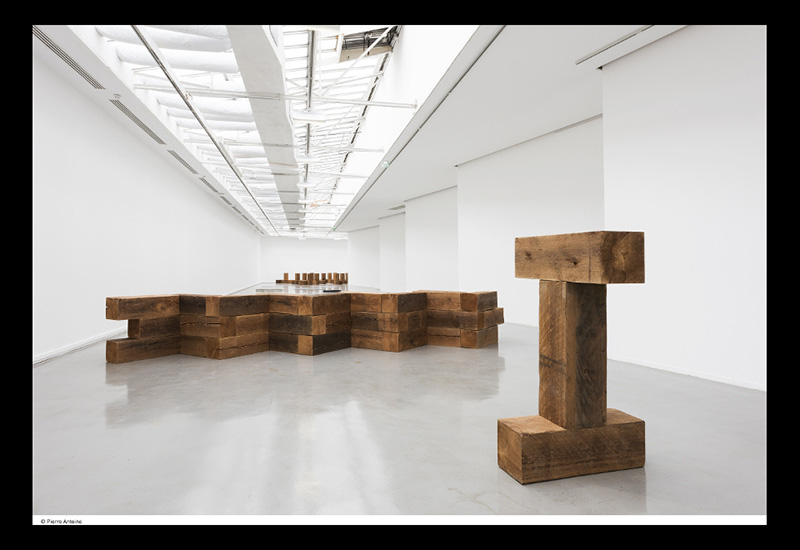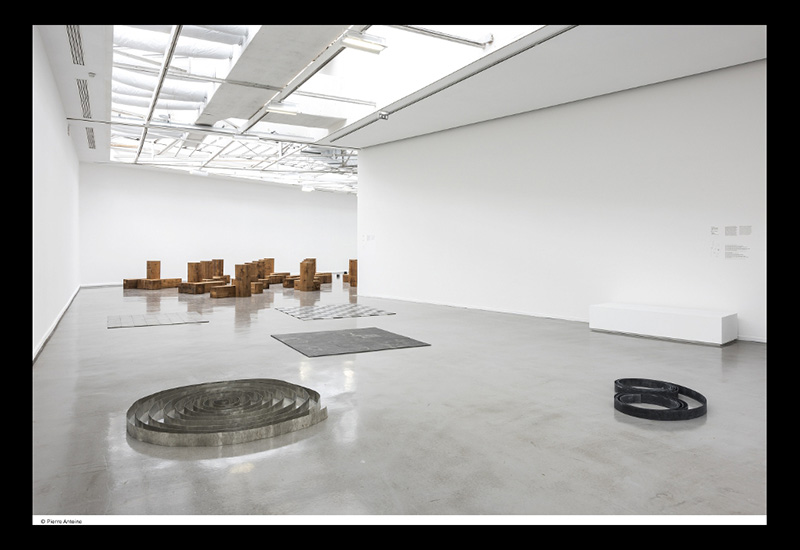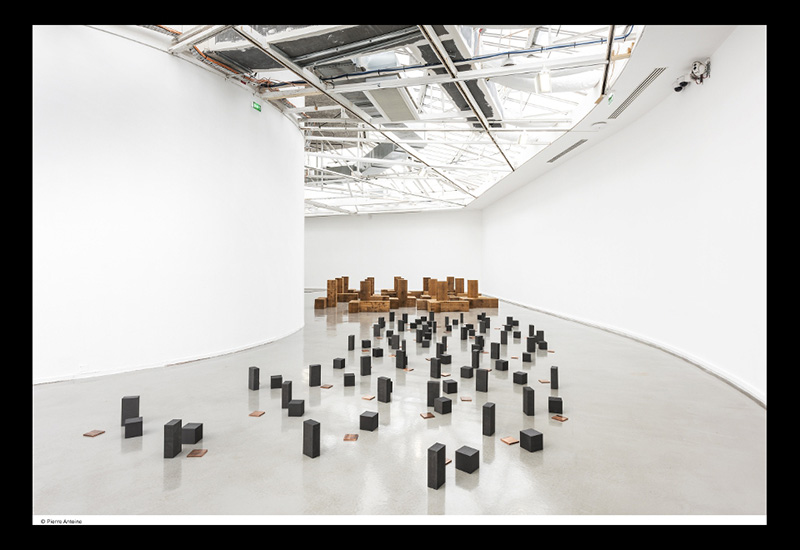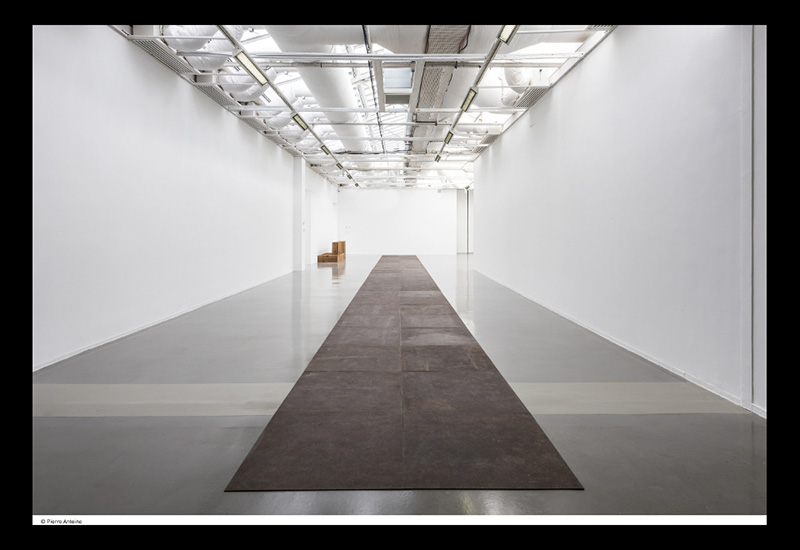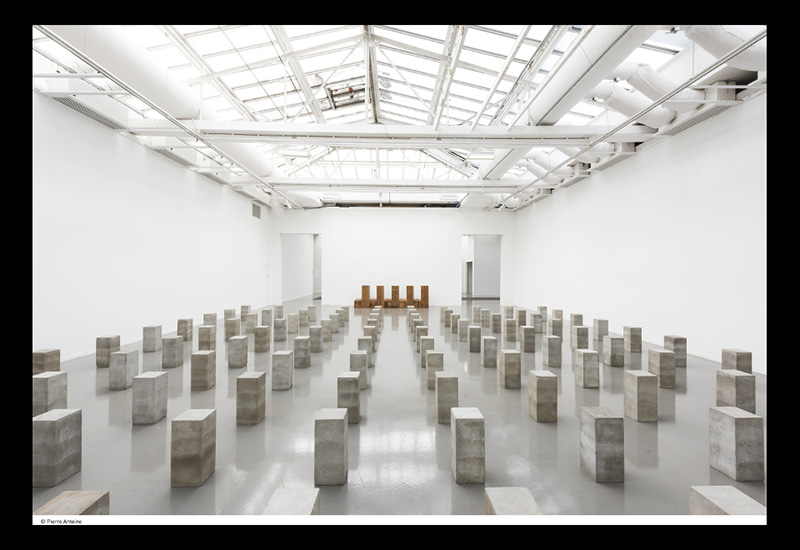ART-PRESENTATION: Carl Andre-Sculpture as place 1958-2010
 Carl Andre was one of the founders of Minimal Art. His reductive sculptural works feature grid-based configurations of select materials. Through his elemental structures, Andre isolates and elevates to invoke the inherent properties of the matter itself. Andre once said that what was beautiful in art was “Not that someone is original but that he can find a way of creating in the world the instance of his temperament”. His own temperament is close to the tranquil philosophy of Taoism, and many critics refer to his work as pacific.
Carl Andre was one of the founders of Minimal Art. His reductive sculptural works feature grid-based configurations of select materials. Through his elemental structures, Andre isolates and elevates to invoke the inherent properties of the matter itself. Andre once said that what was beautiful in art was “Not that someone is original but that he can find a way of creating in the world the instance of his temperament”. His own temperament is close to the tranquil philosophy of Taoism, and many critics refer to his work as pacific.
By Dimitris Lempesis
Photo: Musée d’Art Moderne Archive
The retrospective “Sculpture as Place, 1958–2010” at Musée d’Art moderne de la Ville de Paris, covers the full spectrum and inner consistency of the Andre oeuvre, with 40 monumental sculptures, numerous poems and photographs, works on paper and various objects. The exhibition is Carl Andre’s first exhibition in France for 20 years , the last was at the Musée Cantini in Marseille in 1997 His iconic works appear alongside pieces never shown together before, such as his “Dada Forgeries”. A leading Minimalist figure together with Donald Judd and Robert Morris, Andre also has links with Conceptualism and Land Art and now stands out as one of the 20th Century’s greatest sculptors. Andre attended Phillips Academy in Andover, Massachusetts and he moved in 1957 to New York City, where he met and later married the Cuban-born artist Ana Mendieta. He became associated with Frank Stella in 1958 and worked in Stella’s studio while developing his own drawings and sculpture. A number of experiences, including four years of work in railyards in the early ‘60s and a trip to the prehistoric archaeological site of Stonehenge in England, solidified Andre’s determination to work with modular units. Andre began his sculptural practice by carving into wood timbers, but then he became more interested in using the timber planks themselves as structural pieces. In 1965 he shifted from stacked wood pieces to commercially prefabricated materials like: blocks and bricks, with the intent of demystifying the role of the artist’s hand. He next became interested in placing square metal tiles onto larger squares, upon which he invited viewers to walk. In 1985 his artistic reputation was severely damaged by a tragic event in his personal life. His wife, fell to her death from their New York apartment window. Andre was arrested for her murder, and, although he was fully acquitted in 1988, he became a hate figure for those who were close to Mendieta. He continues to emphasize material and spatial specificity. This retrospective reveals how Andre, working with standard, unmodified industrial elements, redefined sculpture as a means for experiencing space, form and matter. He also produced poems that made use of words for their visual as well as their semantic and sound value. The overt simplicity of his work challenges the traditional notions of technique, composition and installation, at the same time as it makes the viewer an active participant.
Info: Curators: Sébastien Gokalp, Yasmil Raymond, Philippe Vergne, Musée d’Art moderne de la Ville de Paris, 11 avenue du Président Wilson, Paris, Duration: 18/10/16-12/2/17, Days & Hours: Tue-Wed & Fri-Sun 10:00-18:00, Thu 10:00-22:00, www.mam.paris.fr
